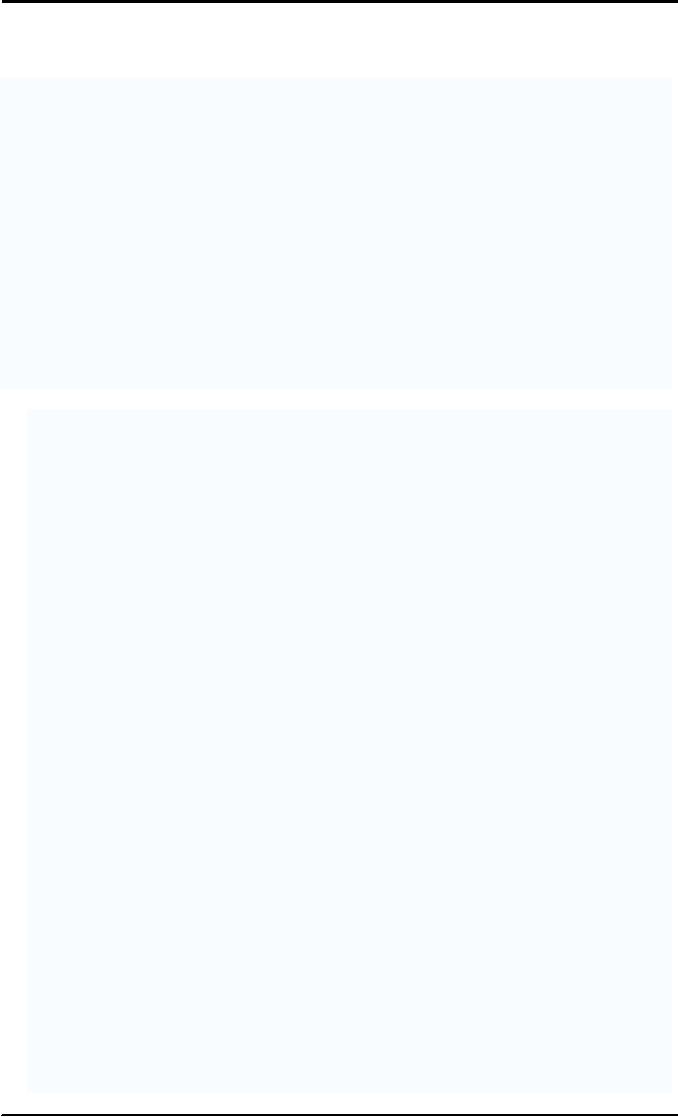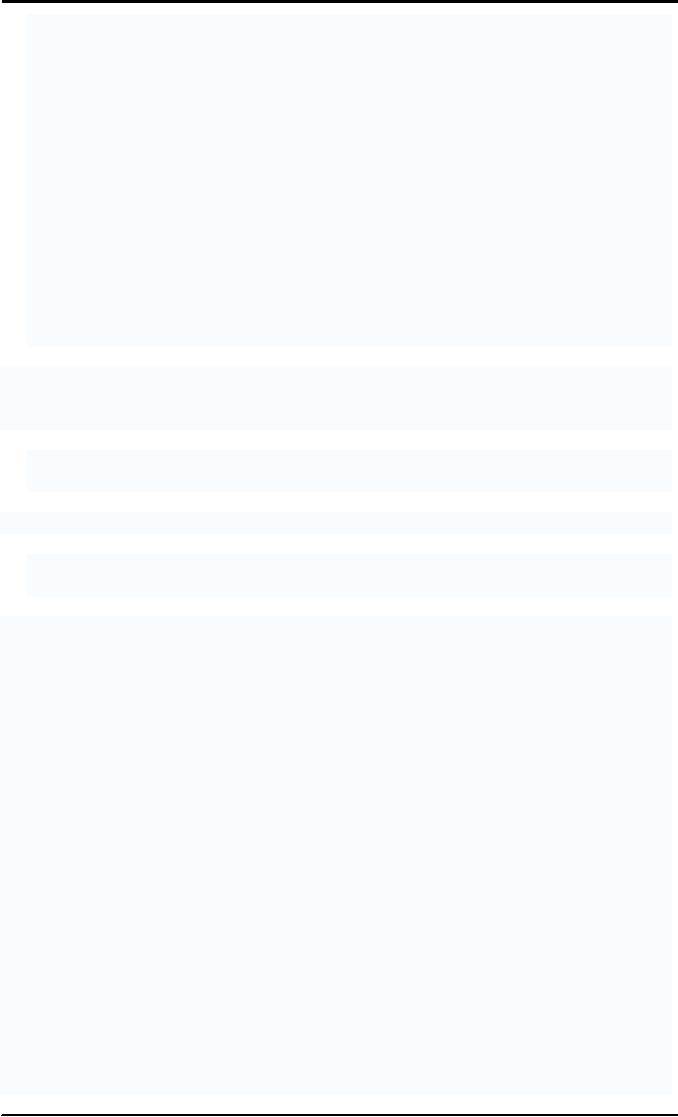 |

Management
of Financial Institutions - MGT
604
VU
Lecture
# 36
Role
of Insurance Companies
Types
of insurance
Any
risk that can be quantified can
potentially be insured. Specific
kinds of risk that
may
give
rise to claims are known as
"perils". An insurance policy will
set out in detail
which
perils
are covered by the policy
and which is not.
Below
is a (non-exhaustive) list of the
many different types of
insurance that exist. A
single
policy
may cover risks in one or
more of the categories set
forth below. For example,
auto
insurance
would typically cover both
property risk (covering the
risk of theft or damage
to
the
car) and liability risk
(covering legal claims from
causing an accident). A
homeowner's
insurance
policy in the U.S. typically
includes property insurance
covering damage to
the
home
and the owner's belongings,
liability insurance covering
certain legal claims
against
the
owner, and even a small
amount of health insurance
for medical expenses of
guests who
are
injured on the owner's
property.
Automobile
insurance, known in the UK as
motor
insurance, is
probably the most
·
common
form of insurance and may
cover both legal liability
claims against the
driver
and loss of or damage to the insured's
vehicle itself. Throughout
most of the
United
States an auto insurance
policy is required to legally
operate a motor
vehicle
on
public roads. In some jurisdictions,
bodily injury compensation
for automobile
accident
victims has been changed to a
no-fault system, which
reduces or eliminates
the
ability to sue for
compensation but provides
automatic eligibility for
benefits.
Credit
card companies insure against damage on
rented cars.
Aviation
insurance insures against hull,
spares, deductible, hull war
and liability
·
risks.
Boiler
insurance (also known as
boiler and machinery insurance or
equipment
·
breakdown
insurance) insures against accidental
physical damage to equipment
or
machinery.
Builder's
risk insurance insures against
the risk of physical loss or
damage to
·
property
during construction. Builder's
risk insurance is typically
written on an "all
risk"
basis covering damage due to
any cause (including the
negligence of the
insured)
not otherwise expressly
excluded.
Business
insurance can be any kind of
insurance that protects
businesses against
·
risks.
Some principal subtypes of
business insurance are (a)
the various kinds of
professional
liability insurance, also
called professional
indemnity insurance,
which
are
discussed below under that
name; and (b) the business
owners policy (BOP),
which
bundles into one policy many
of the kinds of coverage that a
business owner
needs,
in a way analogous to how
homeowners insurance bundles
the coverages that
a
homeowner needs.[7]
Casualty
insurance insures against accidents, not
necessarily tied to any
specific
·
property.
Credit
insurance repays some or all of a
loan back when certain
things happen to the
·
borrower
such as unemployment, disability, or
death. Mortgage insurance
(which
see
below) is a form of credit
insurance, although the name
credit
insurance more
often
is used to refer to policies
that cover other kinds of
debt.
Crime
insurance insures the
policyholder against losses arising
from the criminal
·
acts
of third parties. For example, a
company can obtain crime
insurance to cover
losses
arising from theft or
embezzlement.
130

Management
of Financial Institutions - MGT
604
VU
Crop
insurance "Farmers use crop
insurance to reduce or manage various
risks
·
associated
with growing crops. Such
risks include crop loss or
damage caused by
weather,
hail, drought, frost damage,
insects, or disease, for
instance."[8]
Defense
Base Act Workers'
compensation or DBA Insurance
insurance provides
·
coverage
for civilian workers hired
by the government to perform
contracts outside
the
US and Canada. DBA is required
for all US citizens, US residents, US
Green
Card
holders, and all employees or
subcontractors hired on overseas
government
contracts.
Depending on the country,
Foreign Nationals must also be
covered under
DBA.
This coverage typically includes
expenses related to medical
treatment and
loss
of wages, as well as disability and death
benefits.
Directors
and officers liability insurance
protects an organization (usually
a
·
corporation)
from costs associated with
litigation resulting from mistakes
incurred
by
directors and officers for
which they are liable. In
the industry, it is usually
called
"D&O"
for short.
Disability
insurance policies provide
financial support in the
event the
policyholder
·
is
unable to work because of
disabling illness or injury. It
provides monthly
support
to
help pay such obligations as
mortgages and credit cards.
o
Total
permanent disability insurance
insurance provides benefits
when a
person
is permanently disabled and can no longer
work in their
profession,
often
taken as an adjunct to life
insurance.
Errors
and omissions insurance: See
"Professional liability insurance"
under
·
"Liability
insurance".
Expatriate
insurance provides individuals and
organizations operating outside
of
·
their
home country with protection
for automobiles, property,
health, liability and
business
pursuits.
Financial
loss insurance protects individuals and
companies against various
financial
·
risks.
For example, a business
might purchase cover to protect it
from loss of sales if
a
fire in a factory prevented it
from carrying out its
business for a time.
Insurance
might
also cover the failure of a
creditor to pay money it owes to
the insured. This
type
of insurance is frequently referred to as
"business interruption insurance."
Fidelity
bonds and surety bonds are included in
this category, although
these
products
provide a benefit to a third
party (the "obligee") in the
event the insured
party
(usually referred to as the
"obligor") fails to perform
its obligations under
a
contract
with the obligee.
Health
insurance policies will often
cover the cost of private
medical treatments if
·
the
National Health Service in
the UK (NHS) or other
publicly-funded health
programs
do not pay for them. It will
often result in quicker
health care where
better
facilities
are available.
Kidnap
and ransom insurance
·
Home
insurance or homeowners
insurance:
·
Liability
insurance is a very broad superset
that covers legal claims
against the
·
insured.
Many types of insurance
include an aspect of liability coverage.
For
example,
a homeowner's insurance policy will
normally include liability
coverage
which
protects the insured in the
event of a claim brought by
someone who slips and
falls
on the property; automobile
insurance also includes an aspect of
liability
insurance
that indemnifies against the
harm that a crashing car can
cause to others'
lives,
health, or property. The
protection offered by a liability
insurance policy is
twofold:
a legal defense in the event
of a lawsuit commenced against
the
policyholder
and indemnification (payment on behalf of
the insured) with respect
to
a
settlement or court verdict.
Liability policies typically
cover only the negligence
of
the
insured, and will not apply to
results of willful or intentional
acts by the insured.
131

Management
of Financial Institutions - MGT
604
VU
Environmental
liability insurance protects
the insured from bodily
injury,
o
property
damage and cleanup costs as a
result of the dispersal, release
or
escape
of pollutants.
o
Professional
liability insurance, also called
professional
indemnity insurance,
protects
professional practitioners such as
architects, lawyers, doctors,
and
accountants
against potential negligence
claims made by
their
patients/clients.
Professional liability insurance
may take on different
names
depending
on the profession. For
example, professional liability
insurance in
reference
to the medical profession
may be called malpractice
insurance.
Notaries
public may take out
errors
and omissions insurance (E&O). Other
potential
E&O policyholders include, for
example, real estate
brokers, home
inspectors,
appraisers, and website
developers.
Life
insurance provides a monetary
benefit to a decedent's family or
other
·
designated
beneficiary, and may specifically
provide for income to an
insured
person's
family, burial, funeral and
other final expenses. Life
insurance policies
often
allow the option of having
the proceeds paid to the
beneficiary either in a
lump
sum
cash payment or an
annuity.
o
Annuities
provide a stream of payments and are
generally classified as
insurance
because they are issued by
insurance companies and regulated
as
insurance
and require the same kinds
of actuarial and investment
management
expertise that life
insurance requires. Annuities and
pensions
that
pay a benefit for life
are sometimes regarded as insurance
against the
possibility
that a retiree will outlive
his or her financial resources. In
that
sense,
they are the complement of
life insurance and, from an
underwriting
perspective,
are the mirror image of life
insurance.
Locked
funds insurance is a little-known
hybrid insurance policy
jointly issued by
·
governments
and banks. It is used to protect
public funds from tamper
by
unauthorized
parties. In special cases, a government
may authorize its use
in
protecting
semi-private funds which are
liable to tamper. The terms
of this type of
insurance
are usually very strict.
Therefore it is used only in
extreme cases where
maximum
security of funds is
required.
Marine
insurance and marine cargo insurance
cover the loss or damage of ships
at
·
sea
or on inland waterways, and of the cargo
that may be on them. When
the owner
of
the cargo and the carrier
are separate corporations,
marine cargo insurance
typically
compensates the owner of cargo
for losses sustained from
fire, shipwreck,
etc.,
but excludes losses that can
be recovered from the carrier or
the carrier's
insurance.
Many marine insurance
underwriters will include "time
element"
coverage
in such policies, which
extends the indemnity to
cover loss of profit and
other
business expenses attributable to
the delay caused by a
covered loss.
Mortgage
insurance insures the lender
against default by the
borrower.
·
National
Insurance is the UK's
version of social insurance
(which see below).
·
No-fault
insurance is a type of insurance
policy (typically automobile
insurance)
·
where
insureds are indemnified by
their own insurer regardless
of fault in the
incident.
Nuclear
incident insurance covers
damages resulting from an
incident involving
·
radioactive
materials and is generally arranged at
the national level. (For
the United
States,
see the Price-Anderson
Nuclear Industries Indemnity
Act.)
Pet
insurance insures pets against accidents
and illnesses - some companies
cover
·
routine/wellness
care and burial, as
well.
Political
risk insurance can be taken
out by businesses with
operations in countries
·
in
which there is a risk that
revolution or other political
conditions will result in a
loss.
132

Management
of Financial Institutions - MGT
604
VU
Pollution
Insurance. A first-party coverage for
contamination of insured
property
·
either
by external or on-site sources. Coverage
for liability to third parties
arising
from
contamination of air, water, or
land due to the sudden and accidental
release of
hazardous
materials from the insured
site. The policy usually
covers the costs of
cleanup
and may include coverage for
releases from underground
storage tanks.
Intentional
acts are specifically
excluded
Property
insurance provides protection against
risks to property, such as
fire, theft or
·
weather
damage. This includes
specialized forms of insurance
such as fire
insurance,
flood
insurance, earthquake insurance,
home insurance, inland
marine insurance or
boiler
insurance.
Protected
Self-Insurance is an alternative risk
financing mechanism in which
an
·
organisation
retains the mathematically
calculated cost of risk within
the
organisation
and transfers the catastrophic
risk with specific and
aggregate limits to
an
Insurer so the maximum total
cost of the program is known. A
properly designed
and
underwritten Protected Self-Insurance
Program reduces and stabilizes
the cost of
insurance
and provides valuable risk management
information.
Purchase
insurance is aimed at providing
protection on the products
people
·
purchase.
Purchase insurance can cover
individual purchase protection,
warranties,
guarantees,
care plans and even mobile
phone insurance. Such
insurance is normally
very
limited in the scope of
problems that are covered by
the policy.
Retrospectively
Rated Insurance is a method of
establishing a premium on
large
·
commercial
accounts. The final premium
is based on the insured's
actual loss
experience
during the policy term,
sometimes subject to a minimum and
maximum
premium,
with the final premium
determined by a formula. Under
this plan, the
current
year's premium is based partially
(or wholly) on the current
year's losses,
although
the premium adjustments may
take months or years beyond the
current
year's
expiration date. The rating
formula is guaranteed in the insurance
contract.
Formula:
retrospective premium = converted loss +
basic premium × tax
multiplier.
Numerous
variations of this formula
have been developed and are
in use.
Self
Insurance is protection against loss by
setting aside one's own
money. This can
·
be
done on a mathematical basis by
establishing a separate fund
into which funds
are
deposited
on a periodic basis. Through
self insurance it is possible to protect
against
high-frequency
low-severity losses. To do this
through an insurance company
would
mean
having to pay a premium that
includes loadings for the
company's general
expenses,
cost of putting the policy on
the books, acquisition
expenses, premium
taxes,
and contingencies.
Social
insurance can be many things to
many people in many countries.
But a
·
summary
of its essence is that it is a
collection of insurance coverages
(including
components
of life insurance, disability
income insurance, unemployment
insurance,
health
insurance, and others), plus
retirement savings, that
mandates participation by
all
citizens. By forcing everyone in
society to be a policyholder and pay
premiums,
it
ensures that everyone can
become a claimant when or if he/she
needs to. Along
the
way this inevitably becomes
related to other concepts such as
the justice system
and
the welfare state. This is a
large, complicated topic
that engenders
tremendous
debate,
which can be further studied in
the following articles (and
others):
o
Social
welfare provision
o
Social
security
o
Social
safety net
o
National
Insurance
o
Social
Security (United States)
o
Social
Security debate (United
States)
Stop-loss
insurance provides protection against
catastrophic or unpredictable
losses.
·
It
is purchased by organisations who do not
want to assume 100% of the
liability for
133

Management
of Financial Institutions - MGT
604
VU
losses
arising from the plans.
Under a stop-loss policy,
the insurance company
becomes
liable for losses that
exceed certain limits called
deductibles.
Surety
Bond insurance is a three
party insurance guaranteeing
the performance of
·
the
principal.
Terrorism
insurance provides protection against
any loss or damage caused
by
·
terrorist
activities.
Title
insurance provides a guarantee that
title to real property is vested in
the
·
purchaser
and/or mortgagee, free and clear of
liens or encumbrances. It is
usually
issued
in conjunction with a search of
the public records performed at
the time of a
real
estate transaction.
Travel
insurance is an insurance cover
taken by those who travel abroad,
which
·
covers
certain losses such as
medical expenses, lost of
personal belongings,
travel
delay,
personal liabilities,
etc.
Volcano
insurance is an insurance that
covers volcano damage in
Hawaii.
·
Workers'
compensation insurance replaces
all or part of a worker's
wages lost and
·
accompanying
medical expense incurred
because of a job-related
injury.
Types
of insurance companies
Insurance
companies may be classified as
Life
insurance
companies, which sell life
insurance, annuities and pensions
products.
·
Non-life
or
general
insurance
companies, which sell other
types of insurance.
·
General
insurance companies can be
further divided into these
sub categories.
Standard
Lines
·
Excess
Lines
·
In
most countries, life and
non-life insurers are
subject to different regulatory regimes
and
different
tax and accounting rules.
The main reason for
the distinction between the
two
types
of company is that life,
annuity, and pension business is
very long-term in nature
--
coverage
for
life
assurance or a pension can cover
risks over many decades. By
contrast, non-life
insurance
cover usually covers a
shorter period, such as one
year.
In
the United States, standard
line insurance companies are
your "main stream"
insurers.
These
are the companies that
typically insure your auto,
home or business. They use
pattern
or
"cookie-cutter" policies without
variation from one person to the
next. They usually
have
lower
premiums than excess lines
and can sell directly to individuals.
They are regulated by
state
laws that can restrict the
amount they can charge for
insurance policies.
Excess
line insurance companies (aka Excess and
Surplus) typically insure
risks not covered
by
the standard lines market.
They are broadly referred as
being all insurance placed
with
non-admitted
insurers. Non-admitted insurers
are not licensed in the
states where the
risks
are
located. These companies have more
flexibility and can react faster than
standard
insurance
companies because they don't
have the same regulations as
standard insurance
companies.
State laws generally require
insurance placed with surplus
line agents and
brokers
to not be available through standard
licensed insurers.
134

Management
of Financial Institutions - MGT
604
VU
Insurance
companies are generally classified as
either mutual
or
stock
companies.
This is
more
of a traditional distinction as true
mutual companies are becoming
rare. Mutual
companies
are owned by the
policyholders, while stockholders
(who may or may not
own
policies)
own stock insurance companies.
Other possible forms for an
insurance company
include
reciprocals, in which policyholders
'reciprocate' in sharing risks, and
Lloyds
organizations.
Insurance
companies are rated by various agencies
such as A. M. Best. The
ratings include
the
company's financial strength,
which measures its ability
to pay claims. It also
rates
financial
instruments issued by the
insurance company, such as
bonds, notes, and
securitization
products.
Reinsurance
companies
are insurance companies that
sell policies to other
insurance
companies,
allowing them to reduce their
risks and protect themselves
from very large
losses.
The reinsurance market is
dominated by a few very
large companies, with
huge
reserves.
A reinsurer may also be a direct
writer of insurance risks as
well.
Captive
insurance companies
may be defined as limited-purpose
insurance companies
established
with the specific objective
of financing risks emanating
from their parent
group
or
groups. This definition can sometimes be
extended to include some of
the risks of the
parent
company's customers. In short, it is an
in-house self-insurance vehicle.
Captives may
take
the form of a "pure" entity
(which is a 100 percent subsidiary of
the self-insured
parent
company);
of a "mutual" captive (which
insures the collective risks
of members of an
industry);
and of an "association" captive (which
self-insures individual risks of
the
members
of a professional, commercial or
industrial association). Captives
represent
commercial,
economic and tax advantages to
their sponsors because of
the reductions in
costs
they help create and for
the ease of insurance risk
management and the flexibility
for
cash
flows they generate. Additionally,
they may provide coverage of
risks which is
neither
available
nor offered in the
traditional insurance market at
reasonable prices.
The
types of risk that a captive
can underwrite for their parents
include property
damage,
public
and products liability, professional
indemnity, employee benefits,
employers liability,
motor
and medical aid expenses. The
captive's exposure to such
risks may be limited by
the
use
of reinsurance.
Captives
are becoming an increasingly
important component of the
risk management and
risk
financing strategy of their
parent. This can be understood against
the following
background:
heavy
and increasing premium costs in
almost every line of
coverage;
·
difficulties
in insuring certain types of
fortuitous risk;
·
differential
coverage standards in various parts of
the world;
·
rating
structures which reflect
market trends rather than
individual loss experience;
·
Insufficient
credit for deductibles
and/or loss control
efforts.
·
There
are also companies known as 'insurance
consultants'. Like a mortgage
broker, these
companies
are paid a fee by the customer to shop
around for the best
insurance policy
amongst
many companies.
Similar
to an insurance consultant, an 'insurance
broker' also shops around
for the best
insurance
policy amongst many companies.
However, with insurance
brokers, the fee is
135

Management
of Financial Institutions - MGT
604
VU
usually
paid in the form of commission
from the insurer that is
selected rather than
directly
from
the client.
Neither
insurance consultants nor
insurance brokers are
insurance companies and no risks
are
transferred to them in insurance
transactions.
Third
party administrators are companies
that perform underwriting and sometimes
claims
handling
services for insurance companies. These companies
often have special
expertise
that
the insurance companies do not
have.
Life
insurance and saving
Certain
life insurance contracts
accumulate cash values,
which may be taken by the
insured
if
the policy is surrendered or which
may be borrowed against. Some
policies, such as
annuities
and endowment policies, are
financial instruments to accumulate or
liquidate
wealth
when it is needed. See life
insurance.
In
many countries, such as the
U.S. and the UK, the tax
law provides that the
interest on this
cash
value is not taxable under
certain circumstances. This
leads to widespread use of
life
insurance
as a tax-efficient method of saving as
well as protection in the
event of early
death.
In
U.S., the tax on interest
income on life insurance
policies and annuities is
generally
deferred.
However, in some cases the
benefit derived from tax
deferral may be offset by
a
low
return. This depends upon
the insuring company, the
type of policy and other
variables
(mortality,
market return, etc.).
Moreover, other income tax
saving vehicles (e.g.,
IRAs,
401(k)
plans, Roth IRAs) may be
better alternatives for
value accumulation. A
combination
of
low-cost term life insurance
and a higher-return tax-efficient
retirement account
may
achieve
better investment
return.
136
Table of Contents:
- Financial Environment & Role of Financial Institutions:FINANCIAL MARKETS &INSTITUTIONS
- FINANCIAL INSTITUTIONS:Non Banking Financial Companies
- CENTRAL BANK:Activities and responsibilities, Interest Rate Interventions
- POLICY INSTRUMENTS:Open Market Operations, Capital Requirements
- BALANCE OF TRADE:Balance of Payments Equilibrium, Public Policy and Financial Stability
- STATE BANK OF PAKISTAN:History, Regulation of Liquidity, Departments
- STATE BANK OF PAKISTAN - VARIOUS DEPARTMENTS:Banking Inspection Department
- STATE BANK OF PAKISTAN - VARIOUS DEPARTMENTS (Contd.):Debt Management
- STATE BANK OF PAKISTAN - VARIOUS DEPARTMENTS (Contd.):Training Programs by SBP
- STATE BANK OF PAKISTAN - VARIOUS DEPARTMENTS (Contd.):Human Resources Department
- MAJOR DRIVERS OF FINANCIAL INDUSTRY:GLOBAL FINANCIAL SYSTEM, The World Bank
- INTERNATIONAL FINANCIAL INSTITUTIONS:ADB Projects in Pakistan, Paris Club
- PAKISTAN ECONOMIC AID & DEBT:Macroeconomic Stability, Strengthening Institutions
- INCREASING FOREIGN DIRECT INVESTMENT:Industrial Sector, Managing the Debt
- ROLE OF COMMERCIAL BANKS:Services Typically Offered by Banks, Types of banks
- ROLE OF COMMERCIAL BANKS:Types of investment banks, The Management of the Banks
- ROLE OF COMMERCIAL BANKS:Public perceptions of banks, Capital adequacy, Liquidity
- ROLE OF COMMERCIAL BANKS:Problem bank management, BANKING SECTOR REFORMS
- ROLE OF COMMERCIAL BANKING:Private Deposit Insurance,
- BRANCH BANKING IN PAKISTAN:Remittances, Online Fund Transfer
- ROLE OF COMMERCIAL BANKS IN MICRO FINANCE SECTOR
- Mutual funds:Types of international mutual funds, Mutual funds vs. other investments
- Mutual Funds:Criticism of managed mutual funds, Money Market Fund
- Mutual Funds:Balanced Funds, Growth Funds, Specialized Funds, Measuring Risks
- Mutual Funds:Cost of Ownership, Redemption Fee, Reports to Shareholders
- Mutual Funds:Internet Fraud, The Pyramid Scheme, How to Avoid Investment Fraud
- Mutual Funds:Investing In International Mutual Funds, How to Pre-Select a Mutual Fund
- Role of Investment Banks:Recent evolution of the business, Possible conflicts of interest
- Letter of Credit:Elements of a Letter of Credit, Commercial Invoice, Tips for Exporters
- Letter of Credit and International Trade:Terminology, Risks in International Trade
- Foreign Exchange & Financial Institutions:Investment management firms, Exchange Traded Fund
- Foreign Exchange:Factors affecting currency trading, Economic conditions include
- Leasing Companies:Basic Purpose of Leasing, Technological Benefits
- The Leasing Sector in Pakistan and its Role in Capital Investment
- Role of Insurance Companies:Indemnification, Insurer’s business model
- Role of Insurance Companies:Life insurance and saving
- Role of financial Institutions in Agriculture Sector:What is “Revolving Credit Scheme”?
- Agriculture Sector and Financial Institutions of Pakistan:What is SMEs
- Can Government of Pakistan Lay a Pivotal Role in this Sector?:Business Environment
- Financial Crimes:Process of Money Laundering, Terrorist Financing
- DFIs & Risk Management:Managing Credit Risk, Managing Operational Risk
- Banking Fraud & Misleading Activities:Rogue Traders, Uninsured Deposits
- The Collapse of ENRON:Auditing Issues, Corporate Governance Issues, Corrective Actions
- Classic Financial Scandals:Corruption, Discovery, Black Wednesday
- RECAP:FINANCIAL INSTITUTIONS, CENTRAL BANK,